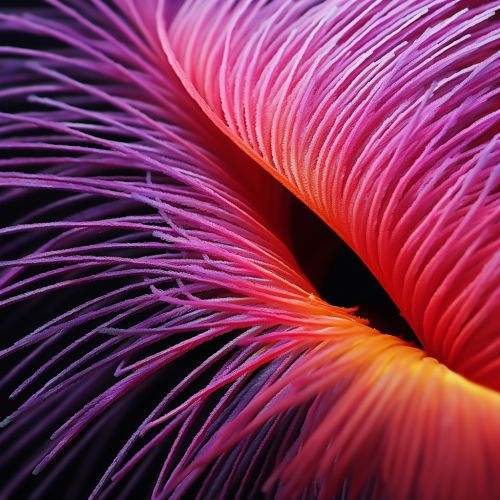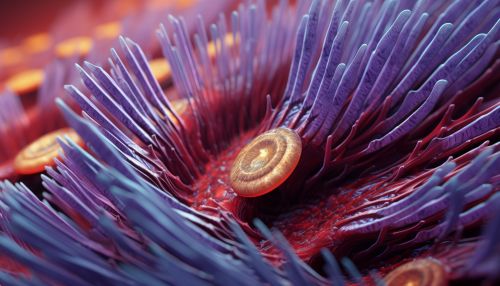Cilium
Overview
A cilium (plural cilia) is a slender, hair-like structure present on the surface of all mammalian cells. They are primarily responsible for locomotion, either of the cell itself or of fluids on the cell surface. In addition, they serve as sensory organelles that respond to mechanical and chemical stimuli from the environment.


Structure
Cilia are composed of a structural framework called the axoneme, which is made up of a series of microtubules. The axoneme of a primary cilium typically has a "9+0" structure, meaning it comprises nine peripheral microtubule doublets but no central pair of microtubules. This is in contrast to the "9+2" structure of motile cilia, which includes a central pair of microtubules in addition to the nine peripheral doublets.
The axoneme is surrounded by the ciliary membrane, which is continuous with the plasma membrane of the cell but has a unique composition of lipids and proteins. The base of the cilium, known as the basal body, is derived from the mother centriole and serves as a nucleation site for axoneme growth.
Function
Cilia perform a variety of functions, depending on their type and location. Motile cilia, which can beat in a coordinated, rhythmic manner, are involved in moving fluid and particles across the cell surface. For example, they play a crucial role in the respiratory system, where they propel mucus and trapped particles out of the lungs.
Primary cilia, which are non-motile, serve as sensory organelles. They are involved in a variety of signaling pathways, including those related to cell growth and development, and sensory perception. For example, in the kidney, primary cilia sense fluid flow and transmit signals that influence cell function and development.
Biogenesis and Maintenance
The biogenesis and maintenance of cilia are complex processes that involve a variety of cellular components. The process begins with the formation of the basal body, which is derived from the mother centriole. The basal body then migrates to the cell surface and docks at the plasma membrane, where it nucleates the growth of the axoneme.
The growth and maintenance of the axoneme require intraflagellar transport (IFT), a bidirectional transport system that moves proteins and other materials along the length of the cilium. IFT is driven by two types of motor proteins, kinesin and dynein, which move in opposite directions along the microtubules of the axoneme.
Clinical Significance
Defects in cilia structure or function can lead to a variety of human diseases, collectively known as ciliopathies. These include primary ciliary dyskinesia, polycystic kidney disease, Bardet-Biedl syndrome, and others. These conditions can affect multiple organ systems, reflecting the widespread role of cilia in mammalian physiology.
